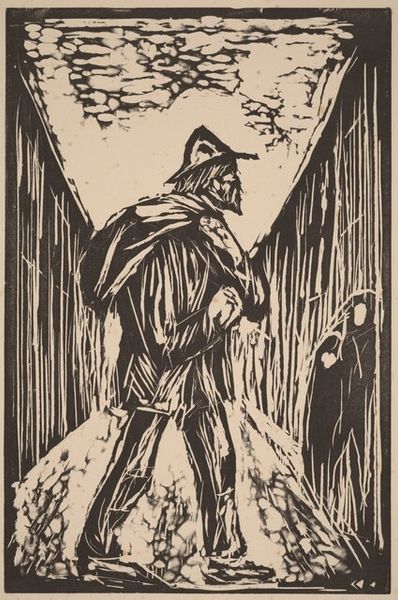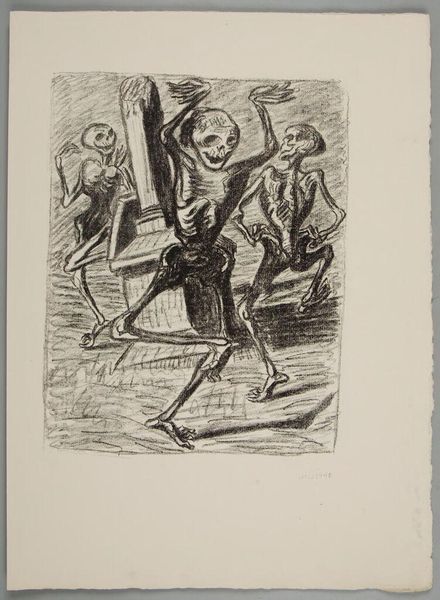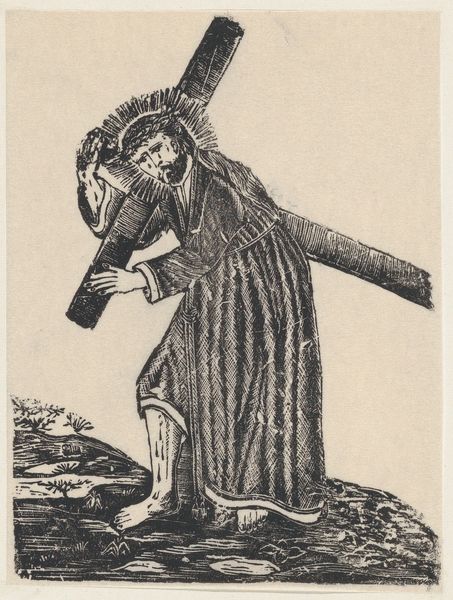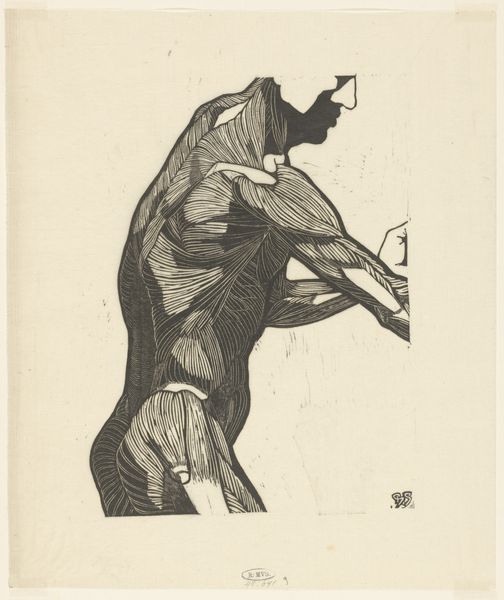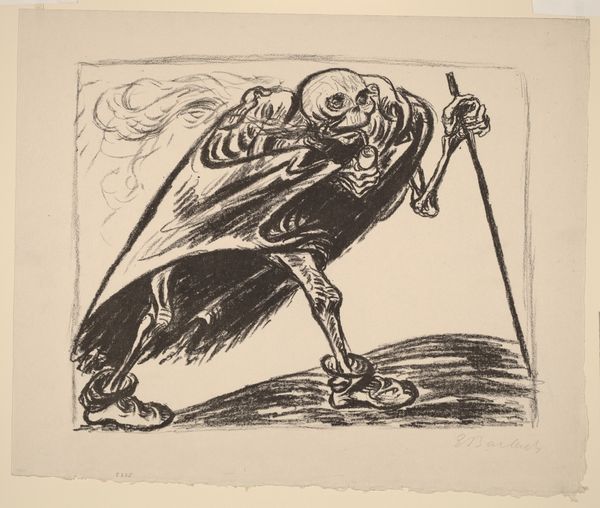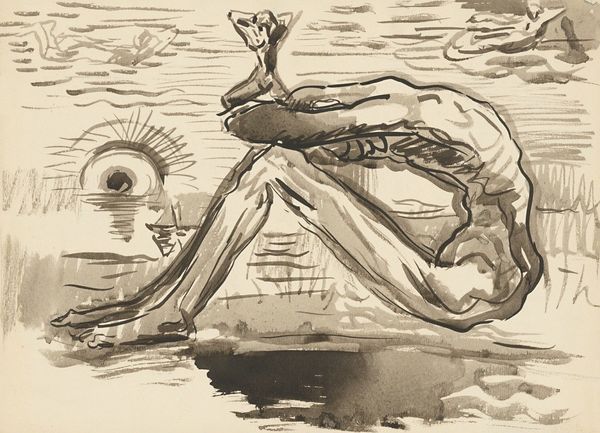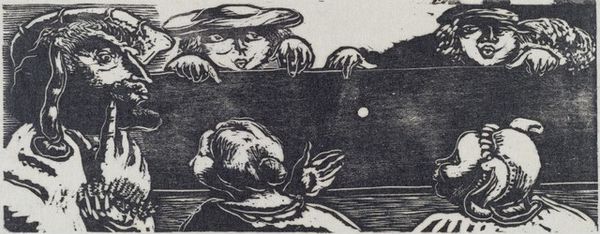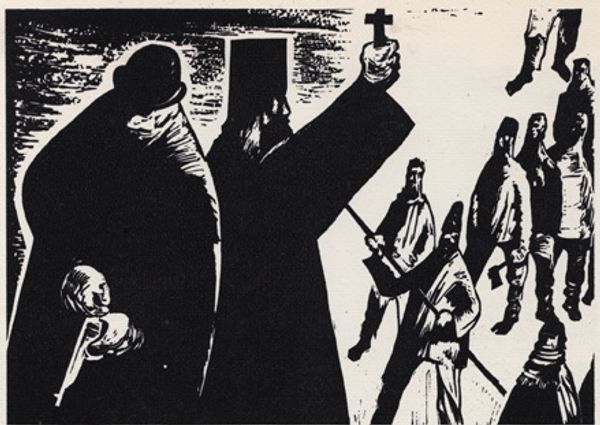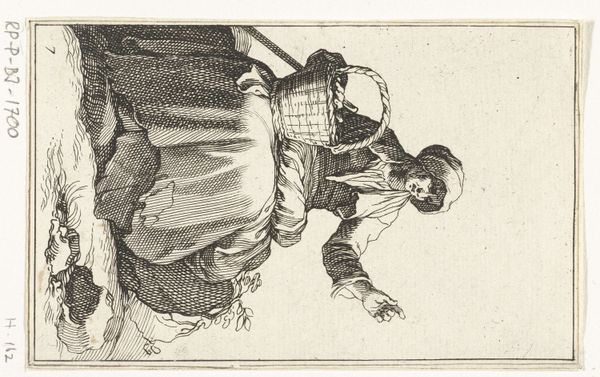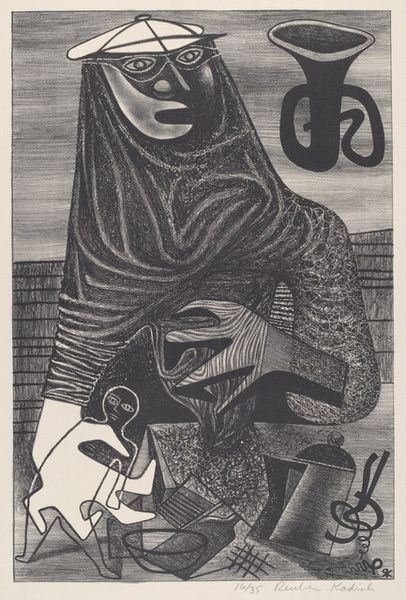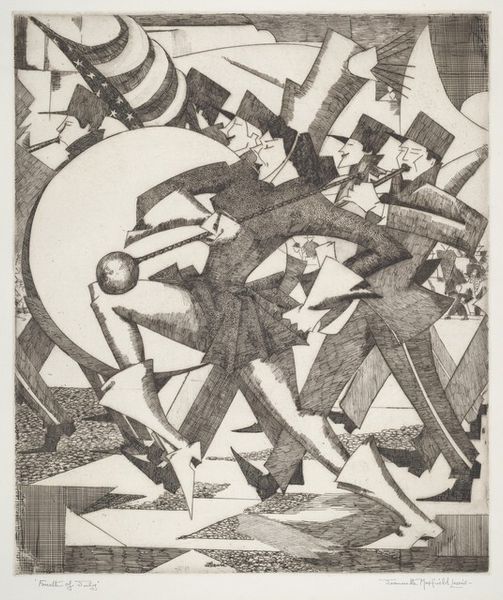
Copyright: National Gallery of Art: CC0 1.0
Editor: Alfred Bendiner's "Peasant Woman," a print from 1934, immediately strikes me as a portrait steeped in the realities of rural life. The woman’s figure and that large basket suggest labor, while her stance indicates both determination and weariness. How do you interpret the social narrative embedded in this work? Curator: Bendiner’s piece, viewed through a historical lens, offers insight into the artistic depictions of labor during the Depression era. Images like these played a crucial role in shaping public perceptions and fostering social awareness. Notice how the exaggerated features could reflect caricatures of the working class common at the time. Does that strike you as a sympathetic or critical portrayal? Editor: It’s complicated. The exaggerated features almost feel dehumanizing, but the clear strength she conveys seems to add respect, too. I see her resolve more than her caricature now that you pointed this out. Curator: The public display of such work was not neutral. Was Bendiner celebrating a cultural ideal or subtly critiquing social imbalances? Artworks such as these can serve to legitimize the established cultural order. And even contribute to a sense of social disruption when shown in public museums. How do you think its context changed reception then versus today? Editor: Thinking about it now, the piece prompts questions about representation, about who has the power to depict whom and for what purposes. Today, we're much more aware of the politics inherent in these images. Curator: Precisely. By examining "Peasant Woman" through its historical and social context, we gain a deeper understanding of both the artwork itself and the forces that shaped its creation and reception. We start to see that representation itself can be a potent instrument.
Comments
No comments
Be the first to comment and join the conversation on the ultimate creative platform.
